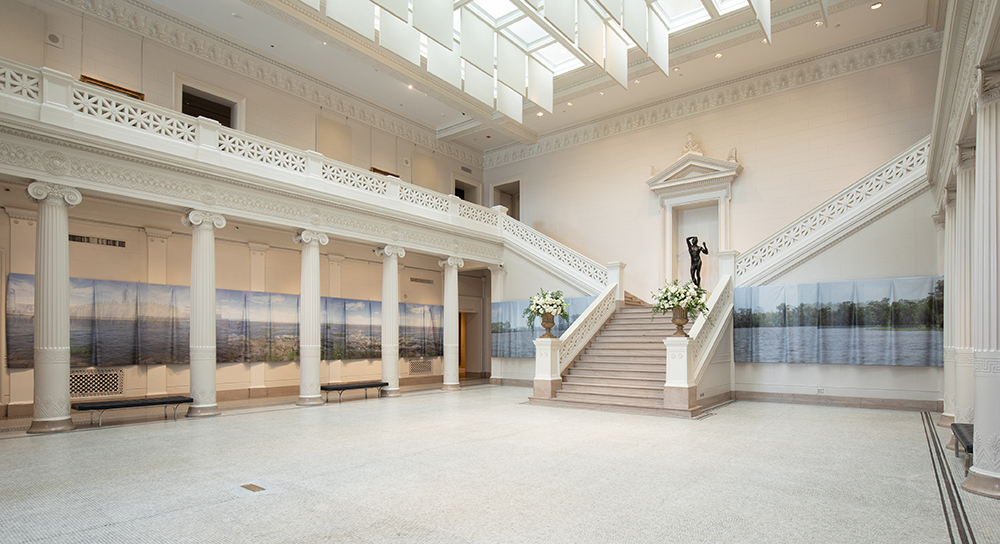“Visuality and the Plantationocene: The Panoramas of Regina Agu”
Panorama: Journal of the Association of Historians of American Art
Spring 2022 (8.1)
Click here for full article
Through the lens of recent theorizations of the Plantationocene – a term relating to the environmental and social changes wrought by exploitative agricultural and labor practices of the colonial era – this article focuses on Regina Agu’s site-specific installation Passage (2019), a multi-layered photographic panorama documenting the changing ecosystem of Louisiana, where river deltas, bayous, lakes and wetland forests have been irreparably damaged by subsidence, salinity and rising sea levels. Commissioned for the New Orleans Museum of Art, Passage responded to a concurrent exhibition of nineteenth-century landscape painting, which included works that documented the region’s colonization and harnessing for plantation agriculture. Exploring the region by water, Agu envisions Louisiana’s shifting, coastal ecosystems as a “future ruin” and a palimpsest of multiple geographies: as a site for natural resource extraction and a landscape marked by histories of enslavement. This aquatic vantagepoint, I suggest, serves as a foil to both the visual and extractive regimes of the plantation—its existence having been dependent on conscripted labor brought across the Atlantic, on irrigation and water management systems, and on forms of enclosure and spatial fixity that the element of water necessarily resists.
Panorama: Journal of the Association of Historians of American Art
Spring 2022 (8.1)
Click here for full article
Through the lens of recent theorizations of the Plantationocene – a term relating to the environmental and social changes wrought by exploitative agricultural and labor practices of the colonial era – this article focuses on Regina Agu’s site-specific installation Passage (2019), a multi-layered photographic panorama documenting the changing ecosystem of Louisiana, where river deltas, bayous, lakes and wetland forests have been irreparably damaged by subsidence, salinity and rising sea levels. Commissioned for the New Orleans Museum of Art, Passage responded to a concurrent exhibition of nineteenth-century landscape painting, which included works that documented the region’s colonization and harnessing for plantation agriculture. Exploring the region by water, Agu envisions Louisiana’s shifting, coastal ecosystems as a “future ruin” and a palimpsest of multiple geographies: as a site for natural resource extraction and a landscape marked by histories of enslavement. This aquatic vantagepoint, I suggest, serves as a foil to both the visual and extractive regimes of the plantation—its existence having been dependent on conscripted labor brought across the Atlantic, on irrigation and water management systems, and on forms of enclosure and spatial fixity that the element of water necessarily resists.
